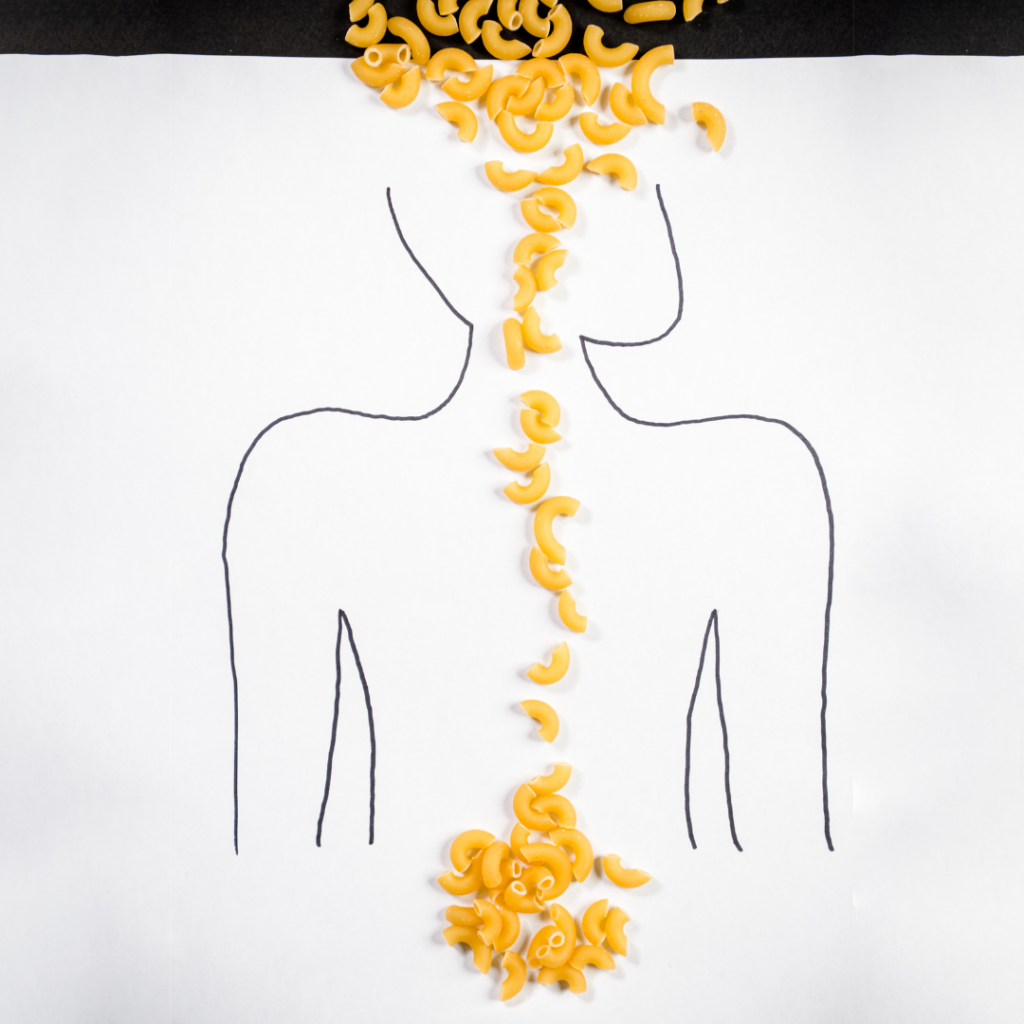What we’ll cover
Aging is a natural process that typically accompanies biochemical and physiological changes that disrupt normal cellular functions. Maintaining optimal cellular function is critical for supporting overall health, quality of life, and well-being into older age. As we grow older, we tend to focus on external factors in the fight against aging – finding the right hairstyle or clothing, for example. That is a perfectly normal reaction, but things that truly create the vitality and energy of youth come from within.
Cellular health impacts our energy, appearance, strength, digestion, and much more. And although aging is inevitable, optimising cellular health can support a healthy aging process, energy levels and quality of life on the way.
The Aging Process
Cells are the building blocks of the body. Cells are powered by mitochondria, which produce an energy-producing molecule called adenosine triphosphate (ATP). Unfortunately, with age, your mitochondria’s ability to make this energy source begins to fade.
When cells stop dividing and regenerating with age, it’s called senescence. This affects mitochondrial function, which has a cascading effect on our overall vitality.

The processes behind aging are complex, but many come down to an imbalance between free radicals and antioxidants in our cells. Free radicals are unstable molecules that perform vital bodily functions, such as fighting bacteria, but they can also harm cells’ DNA.
During normal metabolic processes, antioxidants protect cells from free radical damage, neutralising free radicals. Oxidative stress happens when there isn’t a good balance of antioxidants and free radicals.
Exposure to some elements increases free radicals and increases oxidative stress risk.
Those elements include
● Cigarette smoke
● Pesticides
● Pollution
● Heavy metals
● Alcohol
● Some medications
To support cellular health, we can take several measures to reduce exposure to free radicals and increase antioxidants.
1 – Eating for vitality
A diet high in antioxidants helps to reduce oxidative stress. Fortunately, an antioxidant-rich diet is easy to achieve (and delicious!) by focusing on whole foods. So, incorporate the following foods into your diet to boost your vitality naturally.
Fresh fruits and vegetables. Aim for at least five servings a day. Produce high in antioxidants is often brightly coloured – berries, bright leafy greens, and broccoli are all excellent choices.
Dark chocolate. Yes, chocolate can be part of a healthy diet! Dark chocolate is the best choice for chocolates; studies have found that its antioxidant levels are comparable to some fruits and vegetables. As always, however, moderation is the best approach.
Olive oil. A cornerstone of the anti-aging Mediterranean diet, olive oil is high in antioxidants and has potent anti-inflammatory properties. Some research has also linked olive oil consumption to a lower skin damage risk with age.
Green tea. Replace sugary beverages with antioxidant-rich green tea. Recognised for centuries for its restorative abilities, drinking green tea is another way to help protect your skin from aging, according to a study published in Nutrients.

Quality proteins. Protein plays a vital role in repairing cells and building new ones. Focus on lean proteins like fish and legumes, and avoid processed meats, which often contain large amounts of processing aids and fillers.
2 – Sleep for cell support
A good reason your energy dips after a late night is that your cells repair themselves while you’re asleep. Inadequate sleep creates cellular stress, which impacts your energy levels.
It’s essentially a myth that we need less sleep as we age. Ironically, however, many seniors experience poor sleep. A study published in the journal Neuron 4 took a deep dive into the sleep needs of older adults. It concluded that some of the cognitive difficulties experienced by older adults might be because they aren’t getting enough sleep.
3 – It’s all about the telomeres: How exercise impacts cellular health
There are many reasons why exercise is often called a veritable fountain of youth, and many of them come down to telomeres. Telomeres are sections of DNA found at the end of chromosomes, where they play a protective role. However, with time, telomeres shorten, leaving chromosomes vulnerable to damage. A meta-analysis of existing research concluded that exercise, mainly cardio, has a beneficial effect on preserving the length of telomeres.5
Strength training is also essential. The rebuilding of muscle tissue that follows breaking it down through resistance training has been shown to improve mitochondrial capacity. 6
4 – Smart supplementation to slow senescence
The anti-aging industry is a powerful force, estimated to be worth an astonishing $64 billion in the U.S. alone.7 In such a vast industry, it’s essential to take a close look at marketing for supplements that claim to support aging. Considering how a supplement affects your cellular health is a good starting point.
Promising research has examined the role of nicotinamide riboside in supporting cellular vitality and thus promoting healthy aging.* Nicotinamide riboside is converted to NAD (NAD+ and NADH) molecules. NAD plays a role in the body’s natural DNA repair process at the cellular level.* It also helps to convert food to energy.*
NAD levels drop as we age.8 It may, however, be possible to help support the body’s NAD metabolism with supplements containing nicotinamide riboside,* which is a form of vitamin B3, also called niacin.9
Other supplements support cellular health by providing antioxidants. In addition to a diet high in antioxidants, supplementing with zinc10, vitamin C11, and vitamin E12 can add extra support.
Sources:
1. Carlsen, M.H., Halvorsen, B.L., Holte, K. et al. The total antioxidant content of more than 3100 foods, beverages, spices, herbs and supplements used worldwide. Nutr J 9, 3 (2010). https://doi.org/10.1186/1475-2891-9-3
2. Latreille J, Kesse-Guyot E, Malvy D, Andreeva V, Galan P, Tschachler E, Hercberg S, Guinot C, Ezzedine K. Dietary monounsaturated fatty acids intake and risk of skin photoaging. PLoS One. 2012;7(9):e44490. DOI: 10.1371/journal.pone.0044490. Epub 2012 Sep 6. PMID: 22970231; PMCID: PMC3435270.
3. Prasanth MI, Sivamaruthi BS, Chaiyasut C, Tencomnao T. A Review of the Role of Green Tea (Camellia sinensis) in Antiphotoaging, Stress Resistance, Neuroprotection, and Autophagy. Nutrients. 2019 Feb 23;11(2):474. doi: 10.3390/nu11020474. PMID: 30813433; PMCID: PMC6412948.
4. Mander BA, Winer JR, Walker MP. Sleep and Human Aging. Neuron. 2017 Apr 5;94(1):19-36. doi: 10.1016/j.neuron.2017.02.004. PMID: 28384471; PMCID: PMC5810920.
5. Song S, Lee E, Kim H. Does Exercise Affect Telomere Length? A Systematic Review and Meta-Analysis of Randomized Controlled Trials. Medicine (Kaunas). 2022 Feb 5;58(2):242. doi: 10.3390/medicina58020242. PMID: 35208566; PMCID: PMC8879766.
6. Porter C, Reidy PT, Bhattarai N, Sidossis LS, Rasmussen BB. Resistance Exercise Training Alters Mitochondrial Function in Human Skeletal Muscle. Med Sci Sports Exerc. 2015 Sep;47(9):1922-31. doi: 10.1249/MSS.0000000000000605. PMID: 25539479; PMCID: PMC4478283.
7. Precedence Health, “Anti-Aging Market to Worth U.S. $119Bn by 2030,” ttps://www.globenewswire.com/en/news-release/2022/03/29/2412093/0/en/Anti-aging-Market-Size-to-Worth-Around-US-119-6-Bn-by-2030.html
8. Johnson S, Imai SI. NAD + biosynthesis, aging, and disease. F1000Res. 2018 Feb 1;7:132. DOI: 10.12688/f1000research.12120.1. PMID: 29744033; PMCID: PMC5795269.
9. Trammell SA, Schmidt MS, Weidemann BJ, Redpath P, Jaksch F, Dellinger RW, Li Z, Abel ED, Migaud ME, Brenner C. Nicotinamide riboside is uniquely and orally bioavailable in mice and humans. Nat Commun. 2016 Oct 10;7:12948. DOI: 10.1038/ncomms12948. PMID: 27721479; PMCID: PMC5062546
10. Cabrera ÁJ. Zinc, aging, and immunosenescence: an overview. Pathobiol Aging Age Relat Dis. 2015 Feb 5;5:25592. doi: 10.3402/pba.v5.25592. PMID: 25661703; PMCID: PMC4321209.
11. https://ods.od.nih.gov/factsheets/VitaminC-HealthProfessional/
12. Meydani SN, Lewis ED, Wu D. Perspective: Should Vitamin E Recommendations for Older Adults Be Increased? Adv Nutr. 2018 Sep 1;9(5):533-543. DOI: 10.1093/advances/nmy035. PMID: 30107519; PMCID: PMC6140432.



